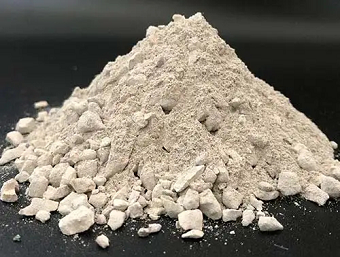Corrosion loss mechanism of ramming mass in submerged arc furnace
In the production of ferroalloys, especially the linings of medium and low carbon chromite arc furnaces, the length of their service life directly affects the production efficiency and production costs. Therefore, knowing the corrosion mechanism of furnace lining materials and effectively avoiding or delaying the corrosion of materials is the basis for ensuring production. For medium and low carbon ferrochromium furnace linings using ramming material bottom materials, the specific corrosion loss mechanism is as follows:
1. The corrosion rate of the bottom of the ramming mass depends on the physical and chemical properties of the ramming material, the basicity of the slag, the operating temperature and the action time. After the electric furnace is powered on, when the furnace bottom temperature gradually rises above 1300 ℃, FeO liquid phase gradually appears in the upper part of the furnace bottom, and calcium ferrite is formed with CaO, and sintering begins. C2F (calcium ferrite) begins to dissolve in a small amount in the periclase lattice to form a solid solution, which promotes the sintering of the material. When the furnace bottom temperature exceeds 1435°C, C2F (calcium ferrite) decomposes, the liquid FeO is gradually absorbed by periclase to form a (Mg·Fe)O solid solution, and CaO forms a calcium-rich liquid phase or forms C2S with SiO2, the original material From MgO+C2F to RO solid solution+C2S ceramic phase, the sintering process is completed.
2. The uppermost layer of the furnace bottom is the working layer. The slag acts on the working layer. Due to the infiltration of a large amount of CaO and SiO slag, a C2S enrichment zone is formed, which is beneficial to improve the refractory performance of the furnace bottom and inhibit the siliceous phase. erosion. When the CaO/SiO2 in the ramming material is 0.93~1.87, the reaction generates CMS-C3MS2, and the layer belt moves down; when the furnace bottom temperature drops to 400~500℃, PC2S (dicalcium silicate)-7C2S occurs (dicalcium silicate) phase change, accompanied by 12% volume expansion, so that the structure of the working layer (ie, the corrosion layer) is loose, white powder, and the bottom of the furnace is lowered. In addition, mid-low carbon ferrochromium linings should avoid midway heat stop.
3. Corrosion layer, under the action of high temperature, liquid slag invades between periclase grains and gradually dissolves the surface of periclase to form low-temperature CMS-C3MS2 cemented phase, which reduces the high-temperature performance of the material. Under the action of high-temperature heat, The bottom of the furnace is gradually melted and corroded, and the bottom of the furnace is lowered, which shortens the life of the furnace lining.
If the service life of medium and low carbon ferrochromium linings is to exceed 300 days, it is necessary to master the erosion mechanism of ramming materials. According to the erosion of various parts of the lining, different grades of ramming materials are used to build composite linings to resist the erosion of slag and iron, so that The furnace bottom has good sinterability and high temperature resistance, thus achieving the purpose of prolonging the life of the furnace lining.

-

Silicate fire brick
Silicon thermal insulation refractory brick refers to the thermal insulation refractory products made of silica as the main raw material, with a SiO2 content of no less than 91%. In addition to the heat insulation perfor··· -

silica bricks manufacturing process
1.1 Determination of raw material ratio and particle compositionThe raw materials for making silica bricks are silica and waste bricks containing more than 96% SiO2, in addition to lime, mineralizers and organic binders.··· -

Alumina hollow ball bricks
Alumina hollow ball bricks are made of alumina hollow balls and alumina powder as the main raw materials, combined with other binders, and fired at a high temperature of 1750 degrees. It belongs to a kind of ultra-high t··· -

Anti-stripping high alumina brick for cement kiln
Anti-stripping high alumina bricks are made of high alumina bauxite clinker, mullite, kyanite, zircon sand, and binder first through granulation and powdering processes, mixed in a certain proportion, then pressed into s···

